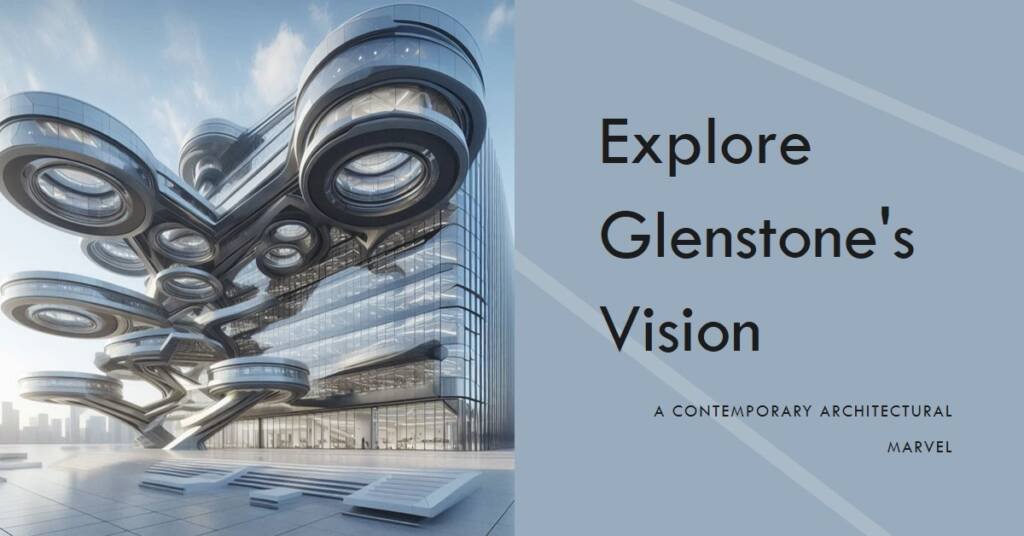
Table of Contents
- Introduction to Glenstone
- The Architecture of Thomas Phifer
- The Vision for the New Glenstone
- Sustainability Features
- Curation and Art Integration
- Community Impact
- Public Response and Anticipation
- Challenges Faced During Development
- Future of Glenstone and Contemporary Art
Introduction to Glenstone
Glenstone, a renowned cultural institution located in Potomac, Maryland, has established itself as a significant player in the contemporary art landscape. Founded by Emily and Mitchell Rales in 2006, Glenstone embodies a unique vision that merges art, architecture, and nature. The institution is dedicated to providing visitors with an engaged and transformative experience, showcasing a carefully curated collection of modern and contemporary art. The founders’ commitment to fostering a deeper understanding of art through immersive experiences is integral to Glenstone’s mission.
At the heart of Glenstone’s ethos is the belief in the power of art to provoke thought and dialogue. The institution strives to create a meaningful connection between art and the public, inviting visitors to explore complex ideas and emotions through the works on display. By presenting art within a context of tranquility and natural beauty, Glenstone enhances not only the appreciation of individual artworks but also the overall visitor experience.
The site’s design respects and enhances its natural surroundings, allowing for a harmonious coexistence between art and nature. The lush landscape, featuring walking paths and serene vistas, encourages contemplation and exploration, thus enriching the interaction between the audience and the artworks. Glenstone serves as a vital cultural hub, drawing attention to contemporary artistic practices and stimulating discussions around various themes and concepts in the art world.
As we delve into the expansion of Glenstone and the role of architect Thomas Phifer in shaping its future, it is essential to recognize the institution’s foundational principles. The ongoing commitment to accessibility, education, and innovative design will continue to position Glenstone as a pivotal institution in the realm of contemporary art, ensuring its lasting impact on both the local community and the broader public art dialogue.
The Architecture of Thomas Phifer
Thomas Phifer is a prominent figure in contemporary architecture, known for his innovative approach that harmonizes natural light, environmental integration, and sustainable design practices. His architectural philosophy is rooted in the belief that buildings should not only serve their intended purpose but also enhance the overall experience of their surroundings. Phifer’s designs often emphasize transparency and fluidity, allowing for a seamless transition between interior spaces and the natural world beyond.
One of the defining characteristics of Phifer’s work is his adept use of natural light. He skillfully manipulates light within his spaces, creating an atmosphere that shifts throughout the day. By utilizing large windows, skylights, and reflective surfaces, Phifer ensures that each project is illuminated in a manner that enhances its aesthetic appeal while minimizing the need for artificial lighting. This focus on natural light not only contributes to the well-being of occupants but also underscores his commitment to sustainability.
Phifer’s integration of buildings with their environments is evident in several key projects, including the Salt Point House in New York, where the structure is thoughtfully embedded in a rural landscape. Similarly, the Glenstone expansion exemplifies his philosophy, as it is designed to coexist with its natural surroundings while prioritizing the visitor’s experience. By utilizing local materials and environmentally sensitive practices, Phifer’s work in the Glenstone project reinforces the importance of context and sustainability in architecture.
Throughout his career, Thomas Phifer has drawn inspiration from renowned architects such as Louis Kahn and Tadao Ando, whose emphasis on light and materiality has profoundly influenced his own design sensibilities. As a leader in the field, Phifer continues to redefine architectural boundaries, ensuring that his projects resonate with both functionality and a deep respect for nature.
The Vision for the New Glenstone
Thomas Phifer’s vision for the expansion of Glenstone is a thoughtful approach to creating a cultural oasis that seamlessly integrates art, architecture, and nature. Central to this vision is the belief that the design should foster a deep connection between visitors and the surrounding landscape. Phifer emphasizes an aesthetic that prioritizes harmony through the use of natural materials, such as stone and wood, which evoke a sense of place and complement the existing environment. The objective is to ensure that the new addition feels as if it has emerged organically from the land itself.
In envisioning the new Glenstone, Phifer focuses on creating spaces that inspire reflection and contemplation. These spaces are designed to enhance the appreciation of the art displayed while inviting visitors to immerse themselves in the serene beauty of the grounds. The layout encourages exploration, with visitors traversing through open spaces and secluded corners that prompt both interaction with the artwork and engagement with nature. This intentional structuring of the experience aims to transform a simple visit into a profound journey of discovery.
The ideation process behind this vision is driven by themes of transparency, light, and sustainability. Phifer’s designs incorporate large expanses of glass to allow natural light to flood the galleries, further blurring the boundaries between indoor and outdoor experiences. This approach not only highlights the artwork but also frames views of the landscape, inviting visitors to appreciate the surrounding beauty. Furthermore, the incorporation of sustainable practices ensures that the expansion aligns with the values of environmental stewardship, thus enhancing the mission of Glenstone to create a lasting impact on both art and nature.
Sustainability Features
The new Glenstone is not just an architectural marvel; it is also a testament to environmental responsibility. The design, envisioned by Thomas Phifer, prioritizes sustainability through various innovative initiatives. An essential aspect of the Glenstone project is its focus on energy efficiency, which is achieved using advanced building technologies and materials. For instance, the structure is equipped with state-of-the-art insulation systems that reduce energy consumption while maintaining optimal indoor climates. Such attributes are pivotal in minimizing the overall carbon footprint of the facility.
Water conservation is another significant feature embedded in the design of Glenstone. The facility incorporates a rainwater harvesting system that captures and recycles rainwater for landscape irrigation purposes. This system not only reduces reliance on municipal water sources but also promotes sustainable landscaping practices. Moreover, low-flow fixtures are installed throughout the premises, further enhancing water efficiency without compromising user comfort.
In alignment with its ecological ethos, the use of sustainable materials is prevalent in the construction of Glenstone. The selection process for materials emphasizes local sourcing, minimizing transportation emissions, and supporting regional economies. Reclaimed and recycled materials are also utilized extensively, thereby reducing environmental impact and embodying the principles of a circular economy. The incorporation of natural materials, such as wood and stone, not only contributes to the aesthetic appeal of the space but also enhances its connection to the surrounding environment.
Overall, Glenstone serves as an exemplary model of contemporary architecture that harmoniously blends aesthetic aspirations with a strong commitment to sustainability. The integration of energy-efficient systems, water conservation strategies, and sustainable materials reflects Glenstone’s dedication to environmental stewardship and innovation in the built environment.
Curation and Art Integration
The architectural design of the new Glenstone plays a pivotal role in the curation and presentation of contemporary art. This innovative vision by Thomas Phifer embraces the interaction between the structure and the artworks it contains, fostering a harmonious relationship that enhances the visitor experience. The layout encourages a fluid movement through the space, allowing for an immersive journey where art is seamlessly integrated into the surrounding environment.
Exhibition spaces are thoughtfully conceived to not only display artworks but also to provoke engagement and contemplation. The large, well-lit galleries provide ample room for diverse installations, while smaller, intimate spaces invite visitors to engage with art on a personal level. This dual approach ensures that the curation of contemporary art is both broad and nuanced, catering to a wide range of artistic expressions and visitor experiences.
This integration extends beyond the physical spaces; it encompasses a dialogue between the architecture, art, and nature. The carefully designed landscape surrounding the Glenstone acts as a backdrop, blurring the lines between the indoors and outdoors. Natural light filters through expansive windows, illuminating the artworks and creating dynamic visual experiences throughout the day. This interplay not only enhances visibility but also deepens the emotional resonance of the works displayed.
Furthermore, Thomas Phifer’s vision incorporates sustainable materials and techniques, adding layers of meaning to both the architecture and the art within. By aligning the building’s ecological footprint with contemporary artistic expression, Glenstone sets a precedent for how museums can evolve in response to both environmental considerations and the needs of today’s artists. Ultimately, the architecture at Glenstone serves as a canvas for the curation of contemporary art, creating a space where creativity can flourish and the audience can connect with art in meaningful ways.
Community Impact
The new Glenstone, designed by the acclaimed architect Thomas Phifer, is poised to play a transformative role in the local community. With its extensive expansion, the facility is expected to introduce a variety of educational programs aimed at engaging the public and enhancing cultural understanding. These programs will likely focus on contemporary art, architecture, and environmental sustainability, making the Glenstone a pivotal educational resource for schools, families, and lifelong learners in the area.
Moreover, the expansion is set to provide meaningful opportunities for local artists. By fostering a collaborative environment, Glenstone aims to showcase artworks from regional talents and integrate these artists into its scheduled exhibits and events. This initiative not only highlights local creativity but also offers artists a platform to gain larger recognition. Furthermore, these collaborations can facilitate mentorship programs where established artists and curators guide emerging talents, nurturing the future of local art.
Community engagement strategies will be at the forefront of the new Glenstone’s mission. The institution intends to actively involve residents through workshops, open studio days, and special events designed to attract a diverse audience. By doing so, Glenstone can cultivate a sense of ownership among the community members, encouraging them to participate and contribute to the vibrant cultural landscape. Potential partnerships with local schools, community organizations, and cultural institutions will also broaden the outreach and impact of Glenstone’s offerings.
In essence, the new Glenstone is more than just an art institution; it is a vision for a cultural hub designed to enrich the community through education, support for local artists, and comprehensive engagement strategies. The anticipated impact on the residents is likely to foster a stronger sense of community while enriching the cultural fabric of the region.
Public Response and Anticipation
The announcement of the new Glenstone, designed by the acclaimed architect Thomas Phifer, has sparked a wave of excitement and anticipation across various communities. Art circles, in particular, have embraced this project with enthusiasm, recognizing it as a significant addition to the cultural landscape of contemporary art. The fresh architectural language proposed by Phifer is seen not only as a visual enhancement but also as a thoughtful response to the site’s natural surroundings. This alignment with nature and art has set a promising tone for its reception.
Community expectations are high as residents and art enthusiasts eagerly await the expansion of Glenstone’s innovative approach to showcasing art. Many are looking forward to how the design will facilitate an immersive experience, engaging visitors with both the artwork and the environment it inhabits. The project’s integration of sustainable practices and natural materials has resonated well with those who prioritize environmentally conscious design. As discussions continue, public interest only intensifies, indicating that Glenstone is poised to become a pivotal destination in the art world.
Moreover, forums and social media platforms have become active spaces for conversations about this architectural project. People express their thoughts on what the new Glenstone might contribute to the dialogue surrounding contemporary art and architecture. The narrative around the expansion has also sparked discussions about accessibility and inclusivity, as many community members hope that it will attract a diverse audience, thus broadening Glenstone’s appeal. The fusion of artistic integrity, community involvement, and architectural innovation has become a hallmark of how this project is perceived, marking it as a pivotal moment in the evolution of cultural institutions. These sentiments continue to shape the ongoing discourse about the upcoming transformation of Glenstone.
Challenges Faced During Development
Developing the new Glenstone Museum, a highly anticipated cultural landmark designed by architect Thomas Phifer, has presented a myriad of challenges inherent in executing a large-scale project of this nature. One of the primary challenges has been navigating the stringent environmental considerations mandated by both federal and local regulations. Given the museum’s expansive grounds set in a natural landscape, utmost care was required to preserve the area’s natural resources and ecological integrity. This entailed thorough environmental assessments to mitigate the potential for habitat disruption, soil erosion, and water pollution.
Furthermore, budget constraints have significantly influenced the project’s execution. In a landscape where construction materials and labor costs fluctuate, effectively managing the budget without compromising the architectural vision posed a notable challenge. The project team had to engage in meticulous planning and cost-management strategies to ensure that all aspects of development met both financial and design goals. This included sourcing sustainable materials that aligned with the artistic vision, which often came with their own budgetary implications.
Zoning regulations also posed additional complications. The new Glenstone is situated in a region with particular zoning restrictions designed to safeguard the area’s character and environmental landscape. Engaging with local authorities to secure the necessary permits involved a lengthy dialogue, ensuring compliance with guidelines while advocating for the project’s unique vision. This negotiation not only tested the patience of the developers but also underscored the importance of community involvement and stakeholder engagement.
In conclusion, the multifaceted challenges encountered during the development of the new Glenstone reflect a broader narrative in construction and architecture. By thoughtfully addressing environmental concerns, budgetary restrictions, and zoning regulations, the project team endeavored to craft a cultural institution that aligns with both legal and ethical standards while enhancing the community’s cultural landscape.


Future of Glenstone and Contemporary Art
The evolution of Glenstone, under the architectural vision of Thomas Phifer, positions the institution at the forefront of the contemporary art landscape. As cultural institutions worldwide adapt to changing societal needs, Glenstone exemplifies how architectural innovation can enhance the experience of art engagement. Phifer’s design philosophy emphasizes a harmonious integration of natural elements, which fosters a contemplative space conducive to appreciating contemporary art. The foresight in this approach not only serves aesthetic preferences but also aligns with broader trends pushing museums towards sustainability and community engagement.
In the near future, Glenstone may continue to expand its role beyond a traditional museum. The incorporation of interactive exhibitions and multimedia installations is likely to become increasingly prominent, enriching visitor interaction. This aligns with the growing demand for art spaces that offer immersive experiences, catering to diverse audiences. Furthermore, the expansion of outdoor installations within the picturesque landscape further signifies a shift towards embracing nature as a vital element of contemporary art presentation.
Moreover, Glenstone’s mission to make art accessible may drive its programming decisions, as institutions increasingly seek to engage with their local communities. This could manifest in educational initiatives, public programs, and collaborations with artists that reflect current cultural dialogues. Art institutions, including Glenstone, are recognizing the importance of serving as dynamic spaces for community interaction and cultural exchange. By doing so, they not only contribute to the art scene but also cultivate a public that values contemporary artistic expression.
Ultimately, Glenstone’s future is intertwined with the evolution of art presentation and audience engagement. As Phifer’s vision continues to guide its trajectory, the institution stands to redefine its contribution to contemporary art, ensuring its relevance in an ever-changing landscape.



